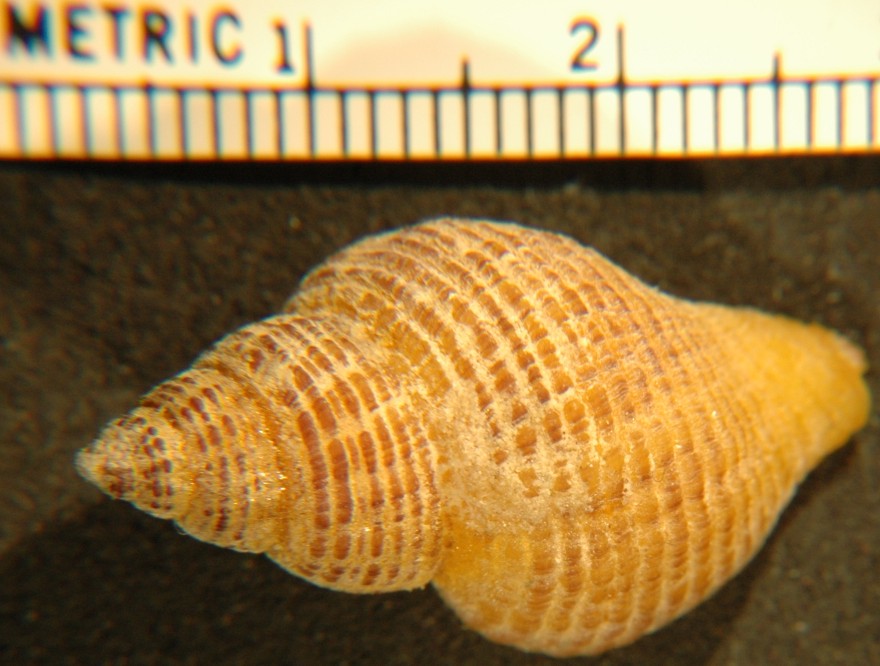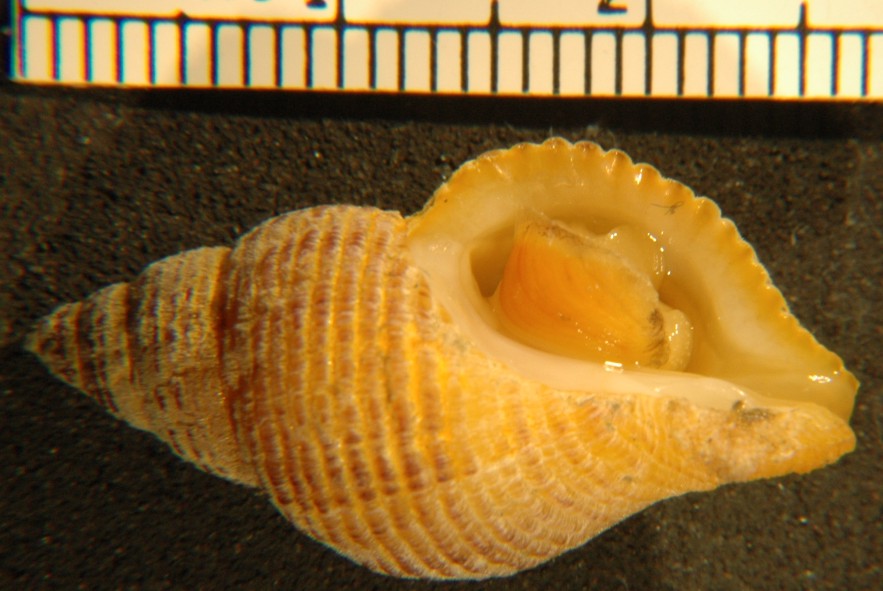Paciocinebrina lurida (Middenforff, 1848)Common Name: Lurid Rock Snail |
|
| Synonyms: Ocenibra lurida |  |
| Phylum Mollusca
Class Gastropoda Order Neogastropoda Suborder Rachiglossa Family Muricidae |
|
| (Ocenebra lurida found subtidally near Rosario. About 2.7 cm long. | |
| (Photo by: Dave Cowles 2006 | |
How to Distinguish from Similar Species: Ocenibra interfossa and O. sclera have narrow, sharply elevated axial ribs. Ocenibra painei has axial ribs elevated as thin lamellae. The introduced species Ceratostoma inornatum has a very thick outer lip of the aperture, about half the width of the aperture.
Geographical Range: Ranges from Sitka (Alaska) to Punta Santo Tomas (Baja California).
Depth Range: Low intertidal zones, but in southern California they are found sublittorally.
Habitat: Commonly found on and under rocks and in crevices.
Biology/Natural
History: This predatory
species is commonly found clinging to rocks. It has been observed
feeding
on gumboot chitons, where it uses its radula
to cut through the dark outer layers on the dorsal surface of the
chiton's
girdle in order to eat the yellow tissue beneath. It does not kill the
chitons, but it is common to see chitons with large grooves eaten out
of
their girdles. May eat barnacles as well. It deposits its eggs in
capsules
attached to rocks.
| Return to: | |||
| Main Page | Alphabetic Index | Systematic Index | Glossary |
References:
Dichotomous Keys:
Kozloff,
1987
Carlton,
2007.
General References:
Morris
et al., 1980. Intertidal Invertebrates of California.
Stanford University
Press.
Scientific
Articles:
General Notes and Observations: Locations, abundances, unusual behaviors, etc.:

Underside of the same individual. Photo by Dave Cowles, 2006
Authors and Editors of Page:
Nathaniel Charbonneau (2002): Created original page
Edited by: Dave Cowles 8-2002 -
Edited by Hans Helmstetler 1-2003